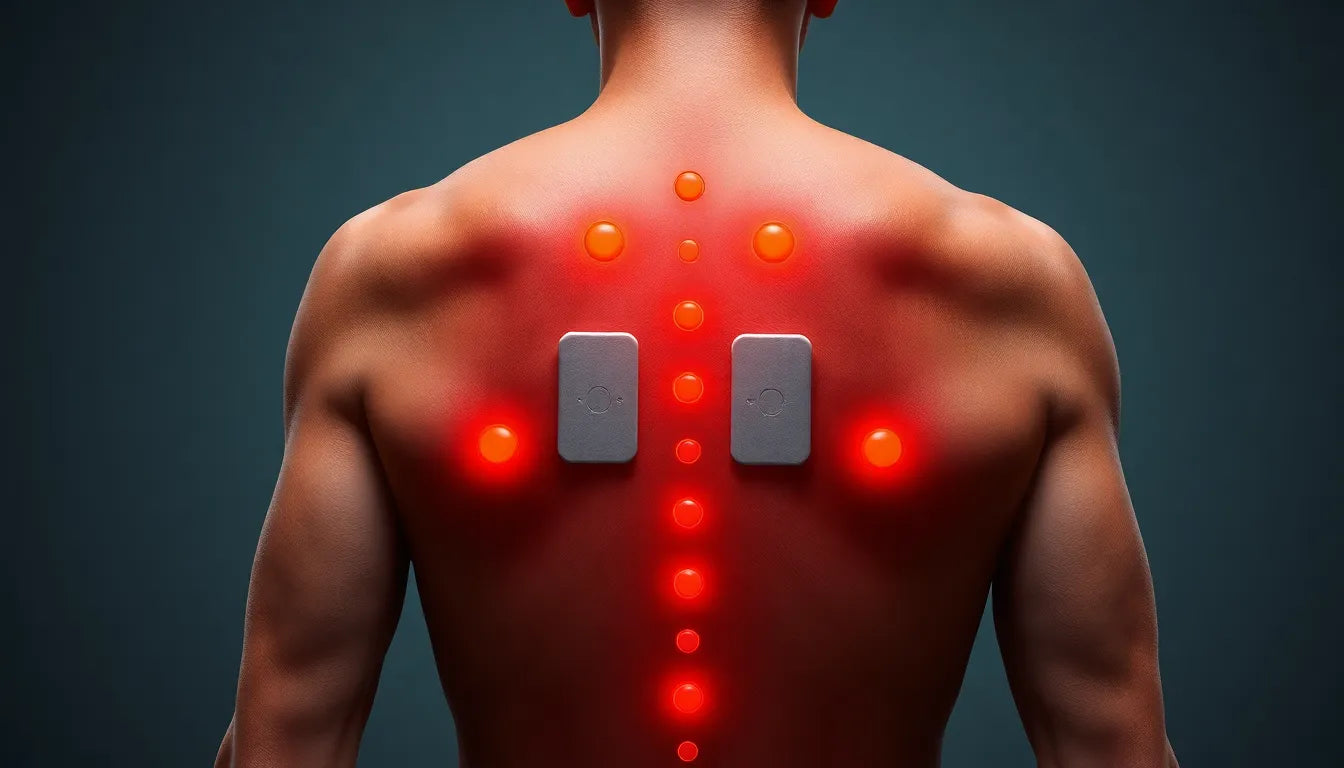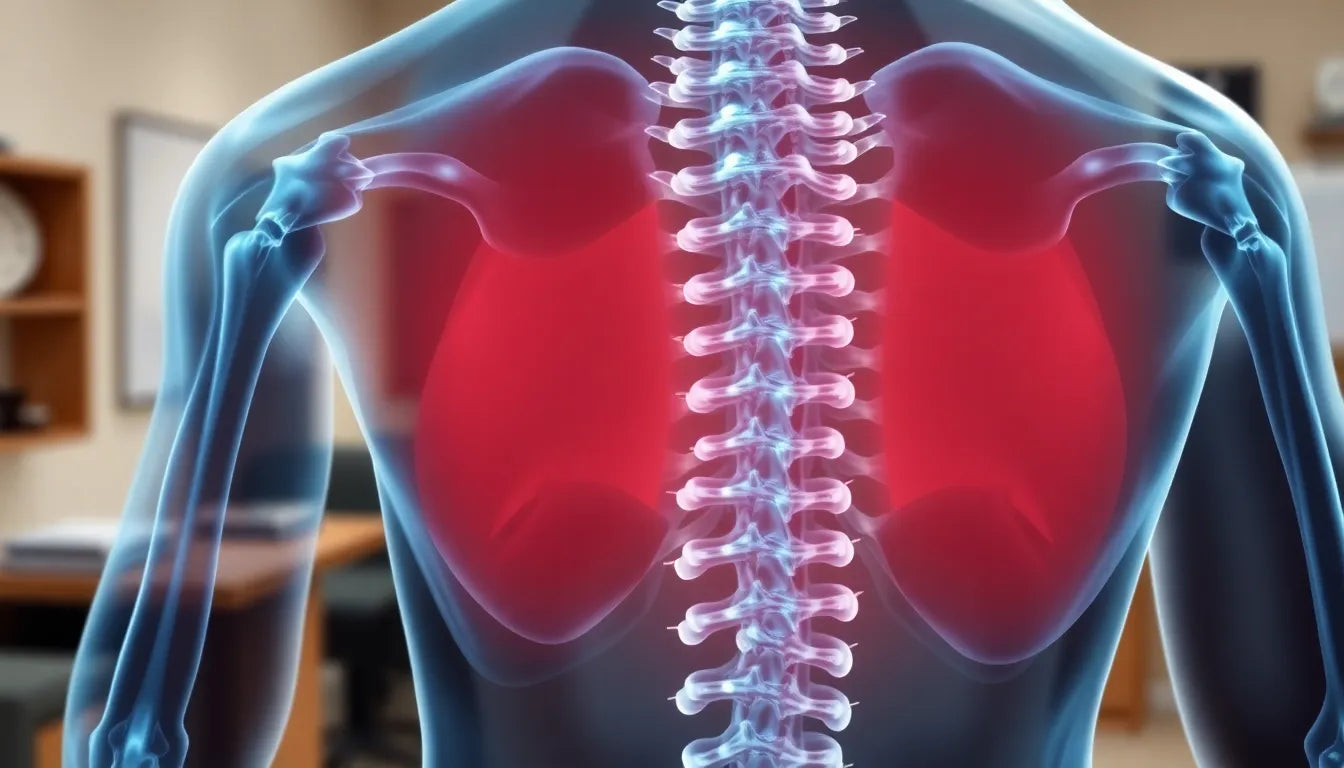Dealing with a herniated disc can be a daunting experience, as it often brings about a range of uncomfortable symptoms. A herniated disc occurs when the soft center of a spinal disc pushes through a crack in the tougher exterior casing. This condition can lead to significant discomfort, including back pain, numbness, and tingling sensations in the limbs. These symptoms can severely impact daily activities, making effective pain management crucial for maintaining quality of life.
Understanding the role of TENS therapy
Transcutaneous Electrical Nerve Stimulation (TENS) therapy has emerged as a popular solution for managing pain associated with herniated discs. This non-invasive method involves using a TENS unit, a device that sends electrical impulses through the skin to stimulate nerves. The stimulation can help reduce pain by blocking pain signals from reaching the brain or by promoting the release of endorphins, the body's natural painkillers. As a result, TENS therapy has gained traction as a reliable tool for pain relief, offering an alternative to medication and more invasive treatments.
Objective of this guide
The purpose of this blog is to provide clear and practical guidance on where to put a TENS unit for individuals suffering from herniated disc pain. Proper pad placement is essential to maximize the effectiveness of TENS therapy, ensuring that users can achieve the best possible relief from their symptoms. By following the recommendations outlined in this post, individuals can enhance their pain management strategy and improve their overall comfort and mobility.
Optimal pad placement techniques for herniated disc pain relief
When using a TENS unit for herniated disc pain, proper pad placement is vital to achieving effective relief. The goal is to strategically position the electrodes so they can effectively disrupt pain signals and stimulate the body's natural pain-relieving mechanisms. Let's explore some of the recommended techniques for optimal pad placement.
Lower back placement
For individuals experiencing lower back pain due to a herniated disc, placing the TENS unit pads just above the iliac crests is often recommended. This area is located on either side of the lower spine. Position the electrodes parallel to each other and the spine, which allows the electrical impulses to target the nerves responsible for transmitting pain signals. It's crucial to avoid placing the pads directly on the herniated disc itself or directly over the spine, as this can lead to discomfort or ineffective treatment.
Bracketing and crossing methods
Two popular techniques for pad placement are the ‘bracketing’ and ‘crossing’ methods. The bracketing method involves placing the pads on either side of the spine at the level where pain is most intense. This setup helps to create a targeted electrical field around the affected area, enhancing the pain-relieving effects.
The crossing method, on the other hand, involves placing the pads diagonally across the pain area. This approach can be particularly beneficial for individuals whose pain radiates or spreads across a larger area. By crossing the electrical impulses, users may experience a more comprehensive relief as the stimulation covers a broader section of the back.
Safety guidelines for using TENS units
While TENS therapy is generally safe, following certain safety precautions is essential to avoid potential issues. Firstly, never place the pads on open wounds, moles, birthmarks, or swollen skin, as this can cause irritation or discomfort. Additionally, avoid placing electrodes near sensitive areas such as the eyes, mouth, and front of the neck, where the skin is thinner and more sensitive.
Effective usage tips for maximizing relief
Duration and frequency of use
To optimize the benefits of TENS therapy, consider using the device for 15 to 60 minutes per session. It's often best to start with sessions lasting between 30 to 45 minutes and adjust based on personal comfort and pain levels. Regular use, tailored to individual needs, can lead to more sustained relief.
Pre-application preparation
Proper skin preparation is crucial for effective TENS therapy. Before applying the pads, ensure the skin is clean and dry. This not only improves the adhesion of the electrodes but also enhances the transmission of electrical impulses. Cleaning the skin helps to prevent irritation and ensures the device functions optimally.
Visual aids for correct pad placement
For those who benefit from visual guidance, diagrams or illustrations showing correct pad placement can be invaluable. Visual aids can help clarify the recommended techniques, ensuring users feel confident in their ability to position the electrodes effectively. By following these guidelines, individuals can enhance their experience with TENS therapy and achieve better pain management outcomes.
Additional considerations for using TENS units
While general guidelines for TENS unit pad placement can be highly effective for many individuals, it's important to recognize that pain levels and conditions vary from person to person. Personalized advice from a healthcare professional can be invaluable, particularly for those with complex or severe symptoms. Additionally, combining TENS therapy with other pain relief methods, such as physical therapy, exercise, or medication, may provide a more comprehensive approach to managing herniated disc pain.
Real-life success stories
Many individuals have found significant relief from herniated disc pain through the use of TENS units. For instance, John, a 45-year-old office worker, reported a marked improvement in his ability to perform daily activities without discomfort after incorporating TENS therapy into his routine. Similarly, Sarah, a former athlete, found that regular TENS sessions helped her manage pain levels effectively, allowing her to engage in light exercise and maintain her fitness.
Comparing TENS therapy with other methods
When considering pain management options, it's helpful to compare TENS therapy with other methods. Here are some advantages of using TENS units:
- Non-invasive: Unlike surgical interventions, TENS therapy is a non-invasive approach to pain management.
- Drug-free: TENS units provide relief without the potential side effects associated with pain medications.
- Customizable: Users can adjust the intensity and duration of sessions based on their comfort and pain levels.
- Portable: TENS units are compact and can be used at home or on the go, providing flexibility in pain management.
Frequently asked questions
What is a TENS unit, and how does it work?
A TENS unit is a device that uses electrical impulses to stimulate nerves through the skin. This stimulation can block pain signals from reaching the brain or promote the release of endorphins, providing pain relief.
Can TENS units completely cure a herniated disc?
No, TENS units do not cure herniated discs. They are designed to alleviate pain symptoms, making it easier to manage daily activities and improve quality of life.
Are there any side effects of using a TENS unit?
Some users may experience minor side effects, such as skin irritation where the pads are placed. To mitigate this, ensure the skin is clean and dry before application and consider using hypoallergenic pads if irritation persists.
How do I know if I'm using the TENS unit correctly?
Proper usage involves correct pad placement and appropriate intensity settings. Ensure pads are placed according to the recommended techniques and adjust the intensity to a comfortable level. Consulting the device's manual or a healthcare professional can provide additional guidance.
Can I use a TENS unit alongside other treatments?
Yes, TENS therapy can be used in conjunction with other treatments. However, it's important to consult with a healthcare professional to ensure compatibility and to tailor a comprehensive pain management plan suited to your needs.
By understanding the benefits and proper use of TENS units, individuals suffering from herniated disc pain can effectively incorporate this therapy into their pain management strategy, enhancing their overall quality of life.



